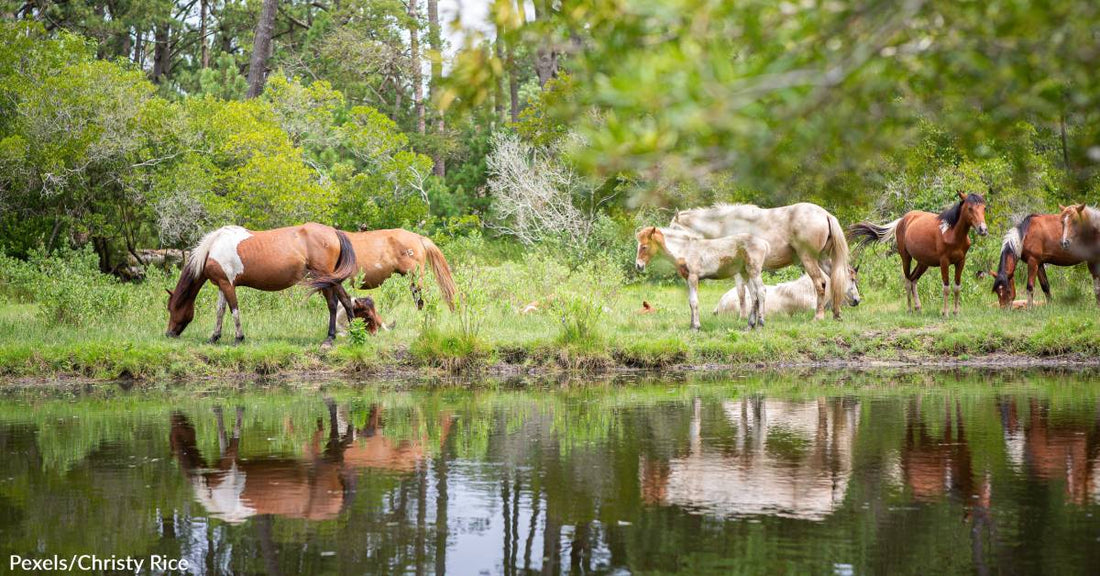Assateague Wild Horse Herd Definitively Proven to Be of Spanish Decent
Rebecca West
For hundreds of years, wild horses have roamed across the barrier island of Assateague off the coast of Maryland and Virginia, but there's always been a bit of a mystery as to how they actually wound up there. Last year, a study using ancient DNA extracted from a 16th-century equine molar lent some credence to local folklore circulating (nearly as long as the horses' residency) that they were marooned there following a Spanish shipwreck sometime in the 1500s.
It all started when Nicolas Delsol, a postdoctoral researcher at the Florida Museum of Natural History, was analyzing ancient bovine DNA recovered from remains located at archaeological sites. His goal was to better understand how cattle were domesticated in the Americas, hence the inspection of centuries-old genetic material preserved in fossilized teeth.
"It was a serendipitous finding," he noted. "I was sequencing mitochondrial DNA from fossil cow teeth for my Ph.D. and realized something was very different with one of the specimens when I analyzed the sequences."
One of the teeth, which turned out to be a fragment of an adult molar, didn't belong to a cow at all but rather a horse. According to the study published in the journal PLOS ONE, the DNA within the tooth is the oldest ever sequenced for a domesticated equine from the Americas.
The tooth was discovered in what was one of Spain's first colonized settlements, Puerto Real, on the island of Hispaniola. Established in 1507, it reportedly served as the very last port of call for ships sailing from the Caribbean for many, many decades. Due to piracy and other factors in the 16th century, residents were ordered to evacuate in 1578. What was left of the outpost was discovered in 1975, and archaeological excavations led by the Florida Museum were ongoing until 1990.
"Horses were reserved for individuals of high status, and owning one was a sign of prestige," Delsol said. "There are full-page descriptions of horses in the documents that chronicle the arrival of Cortés in Mexico, demonstrating how important they were to the Spanish." Due to this, the animals were generally well cared for and not unceremoniously discarded.
Cows, on the other hand, were used as meat and byproduct sources for things like leather while their bones were dumped in waste heaps known as middens. When Delsol compared the tooth's DNA with modern horses from around the world, he was in for quite a surprise. Delsol found that the feral horses living on Assateague were the closest next of kin.
How they got there had always been a mystery. The National Park Service opined that the likeliest explanation was that the horses were brought by English colonists in the 1600s. Others thought that the feral equines descended from horses that survived a Spanish shipwreck and swam ashore. That theory was popularized in a 1947 children's book titled Misty of Chincoteague, which was later adapted into a film.
Until last summer, there was scant evidence to support either theory. The results from the DNA analysis now firmly point to Spanish explorers as the source of the horses living on Assateague.
Per the U.S. Bureau of Land Management, approximately 82,883 wild horses are living across the country as of March 2023, which is still about three times what is sustainable and healthy for the land and the herds, according to them. Many of these animals find themselves at auctions with grim futures ahead of them unless a sanctuary or rescue steps up.





